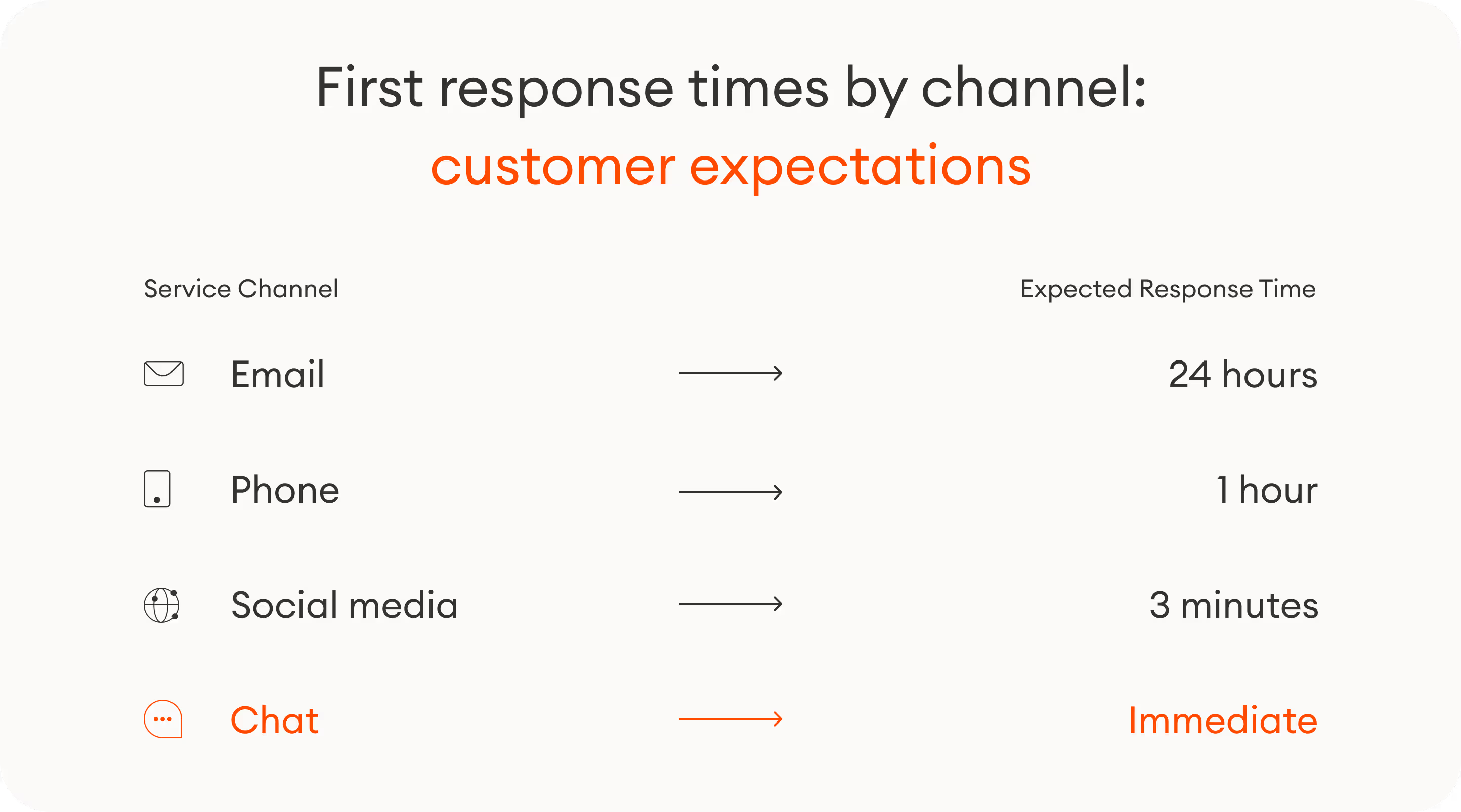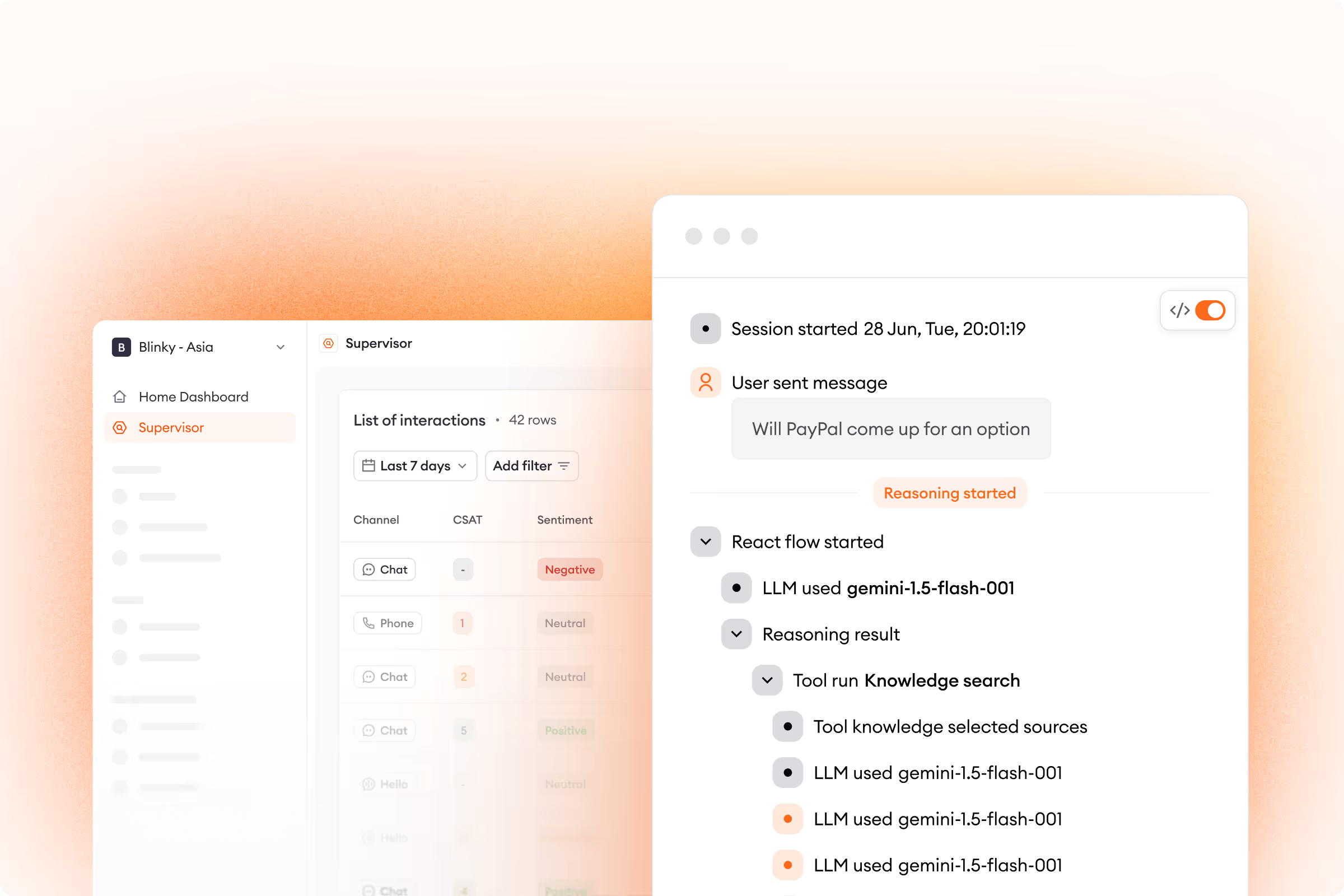The central figure in any business’s success is the customer.
But high-quality products or low prices alone won’t send shoppers home happy.
To really delight customers, it’s vital to deliver an excellent customer experience.
This blog post explains what customer experience means and lists 17 strategies on how to improve the customer experience.
What is customer experience?
Broadly put, customer experience (CX) refers to the complete journey a customer takes with your company or brand. This starts at their first touchpoint (like seeing an advertisement or visiting your website), continues through the shopping process, and lasts all the way to the point that they’ve finished using your product or service.
While CX is often intertwined with customer service, it’s important to distinguish one key difference. Customer service is about helping customers who require assistance with one specific issue, whereas CX is focused on leaving a positive impact across all customer interactions.
Why is a positive customer experience important?
Offering exceptional customer experiences is a true differentiator that lets brands shine. Only 11% of customers say companies are offering a superior experience, and just 6% of brands saw their customer experience improve in 2023.

Moreover, poor experiences can be quite harmful for any business. 73% of shoppers abandon a brand after a single negative experience.
On the other hand, positive experiences can do a world of good. Attracting new customers can cost 5x more than retaining existing shoppers, so maintaining a great customer experience can be extremely valuable.
These figures underscore that a solid customer experience strategy can significantly influence buying decisions and assist in building customer loyalty and retention.
Moreover, an outstanding customer experience can easily translate into positive word-of-mouth marketing for your company. While hard to quantify, turning potentially angry customers into brand advocates helps businesses attract new shoppers and expand their customer base with ease.
17 ways to improve the customer experience
The importance of a good customer experience is clear. But how can you ensure that you’re offering one? Use these 17 pointers to get started on the right path.
Upgrading your customer support
1. Offer support over live chat
41% of customers see live chat as their top customer service channel — it offers near-instant support with minimal effort. Customers expect faster response times than ever before, and live chat is the only channel capable of meeting these needs — phone and email continue to fall well short.

Optimize your customer service experience by greeting shoppers to your website with a chat widget. That way, all they have to do is visit your page to see that help is available.
2. Provide self-service options
67% of customers prefer self-service over contacting a customer support rep. These options give customers greater empowerment, more convenience, and substantial time savings.
Let customers resolve issues on their own with a user-friendly FAQ page or a self-service app. These resources enable satisfied customers to achieve more on their own, enhancing the customer experience in the process.
3. Set up a robust knowledge base
By developing a comprehensive knowledge base, you’ll give customers a range of self-service resources right at their fingertips. Include material like tutorials, how-to guides, and in-depth articles on your website so shoppers can find answers to their most pressing questions on their own.
Without the need to wait for a human agent, customers can enjoy a smooth service experience on their terms. Want to go the extra step? Ensure your knowledge base is periodically updated to contain the latest information and policies. Have a limited sale or new coupon code? Highlight them here.
4. Automate repetitive tickets
A knowledge base is a step in the right direction, but why have customers hunt down answers when you can automatically serve them up on a platter? Automation tools like a customer service chatbot give shoppers instant replies and are always on, meaning they can assist customers 24/7 — resolving multiple tickets at a time — even when human agents are unavailable.
A chatbot can handle your most repetitive questions, with leading tools able to resolve 70% of incoming tickets. As a result, most customers get an answer in no time and support agents don’t have a ticket backlog overwhelming them. Plus, customers that actually require a rep can enjoy quicker support as well.
Check out our What is Customer Experience Automation (CXA)? blog post for a deep dive into automation’s impact on the complete customer experience.
5. Leverage AI
To fully see how automation can transform your customer experience, it’s vital to select a solution powered by artificial intelligence (AI). AI allows for natural interactions — customers can describe their issues however they please, and your chatbot doesn’t need to rely on predefined keywords to accurately recognize what shoppers want.
AI also allows chatbots to personalize messages and create customized product suggestions to fit each customer’s needs. In addition, AI solutions analyze which automated responses aren’t performing well, letting teams continuously fine-tune customer service interactions to ensure shoppers get the best experience possible.
And don’t forget about generative AI. Revolutionary solutions built specifically for customer service can capture your brand voice and interact just like a human agent without any predefined script, delivering customers ultra-personalized conversations that elevate the entire customer experience.

6. Track your key metrics
Improving the customer experience shouldn’t be guesswork. Instead, focus on data-driven insights and adapt based on what the numbers say. There are various metrics and key performance indicators (KPIs) you can choose from to see just how effectively your CX management is going.
Your customer satisfaction scores (CSAT) gauge how pleased shoppers are with the service they’re receiving, and your net promoter scores (NPS) measure customer loyalty. Another metric worth tracking is your customer effort score (CES).
Even monitoring support metrics like response times, resolution rates, and churn rates over time will show if your company is in fact providing great customer service.
Learn what other metrics you should track to gauge your team’s performance in our blog post, Top 19 Customer Support Metrics to Measure.
Understanding your customers
7. Know your target audience
When looking to create the right kind of customer experience, it’s crucial to know precisely who you’re communicating with. Once you nail down who your product or service is for, make sure everything you do is in line with customer needs, preferences, and motivations.
For instance, what age range do most of your customers fall in? Are you selling to men or women? Is there a specific geographic market you’re looking to serve?
This basic segmentation data will help you identify your ideal customer persona. And once you know who you’re selling to better than anyone else, understanding how to deliver positive customer experiences becomes more straightforward.
8. Act on customer feedback
The best way to learn your customers’ priorities and pain points is to get them directly from your shoppers. Automation tools make it easy to collect feedback, analyze it, and take meaningful actions. Through post-chat surveys and rich analytics tools, support team members can gather real-time customer data and automatically receive recommendations on what steps to take next.
And remember to check organic responses from more casual interactions such as social media comments. This honest feedback can offer a treasure trove of information regarding customer sentiment as well.
9. Keep up with evolving customer expectations
You aren’t interacting with customers in a vacuum, so staying on top of shifting customer expectations is critical for enhancing the customer experience. The businesses that thrive are those that anticipate changes in customer needs and adapt accordingly.
To meet expectations in the areas of speed, convenience, and personalization, foster innovation throughout your organization. Embrace new tech like AI to match the pace of digital advancements and guarantee you’re constantly aligned with what customers expect.
10. Map the customer journey
A customer journey map is visual representation of the stages a customer goes through when interacting with a company. You can use one as a guide to provide a better, more streamlined experience.
Charting a clear course through the entire customer journey spotlights what happens along each point of interaction and why it happens.
For example, a map can help you see that most of your customers visit your website after seeing your ads on social media. They view various product pages, but you notice few actually make a purchase. This indicates customers may be experiencing some kind of friction on your site that’s preventing them from buying something. Now, you can take corrective measures and see if there’s any improvement.
A customer journey map can help you improve each shopper’s flow from prospect all the way to loyal customer. When you acknowledge each potential roadblock, it’ll be much easier to build end-to-end customer journeys that lead to more happy customers down the road.
11. Create a loyalty program
Great customer experiences don’t happen in a single moment. To turn first-time customers into loyal repeat shoppers, you’ve got to wow them with a series of positive experiences that leave a lasting impression.
That’s why incentivizing buyers with a customer loyalty program can boost customer retention so effectively.
Reward returning customers with exclusive discounts, early access, or points they can redeem to cement the idea that they’re a top priority for your business. Something as simple as a birthday promotion shows customers that they’re appreciated and that your company is putting in the effort to nurture stronger customer relationships.
Building a customer-centric culture
12. Give agents comprehensive onboarding
In many cases, all it takes to improve the customer experience is investing in training that expands beyond product knowledge alone.
Highlight how to deal with customer complaints and how to build a personal connection with shoppers. Train reps on more than technical skills — but on soft skills like negotiation, conflict resolution, and keeping a positive attitude too — to take your CX to the next level.
By giving employees the right training, you’re arming them with the tools they need to build meaningful interactions with customers.
13. Practice empathy
When interacting with customers, it’s important to always put yourself in their shoes. Empathize with them to get a grasp of what’s really at the heart of their problem. Doing so will make it easier to offer the optimum solution.
The key to empathy lies in treating each customer like an individual rather than just another ticket. Exhibiting empathy will help customer service reps deliver an exceptional customer experience on a consistent basis.
Discover what other soft skills can enhance the customer service experience in our blog post, Your Ultimate Guide to Soft Skills in Customer Service.
14. Prioritize customer satisfaction
Getting your service team to understand the importance of customer satisfaction is paramount for creating excellent shopping experiences.
Yes, giving customers the products they want is important, but true customer satisfaction goes much further than that — it’s about ensuring every stage of the customer journey is fully optimized to deliver a great customer experience.
Is it easy to browse and compare your products? Are wait times for customer support kept to a minimum? Are your shipping policies clear?
If you continuously improve customer satisfaction, you’ll differentiate yourself from competitors and forge stronger customer relationships.
15. Implement proactive communication
Customer service is traditionally reactive, with support agents waiting for customers to first report an issue. But it doesn’t have to be.
Service teams can proactively reach out to customers with product suggestions or help with checkout to make the shopping process as frictionless as possible. You can also offer follow-up emails about orders or shipping to increase transparency and build greater trust with customers. This is especially critical when the issue is something you can’t control, such as weather-related shipping delays.
16. Craft an omnichannel experience
Another way to build an improved customer experience is to create an omnichannel ecosystem where customers can transition between support channels without any hitches. Omnichannel customer service teams craft a consistent brand experience, so interactions resonate uniformly across all platforms whether the customer reaches out via your website, SMS, or social media.
Leading AI technology can seamlessly integrate your channels together, making the entire service experience more user-friendly. With an omnichannel experience, customers can make quick yet informed decisions each and every time.
17. Convert bad experiences into opportunities
Negative customer experiences don’t have to end with poor business outcomes. When you view every complaint as a sign of where improvements should be introduced, they can be valuable opportunities.
Are you seeing an influx in complaints regarding incorrect sizing? Now you know to retool your online sizing guidelines.
Are customers bemoaning how long it takes to reach a customer support rep via telephone? Let more people know they can receive instant help by heading to your chatbot.
Furthermore, be forthcoming about any mistakes to smooth over tense situations. Go the extra mile to exceed expectations and convert angry customers into satisfied shoppers.
Improving the customer experience — made easy
Offering a better customer experience game isn’t a one-off event but an ongoing process. It often requires many moving parts — but there are available tools that can make substantial improvements well within your reach.
Zowie, a customer service automation suite built for ecommerce brands, helps teams deliver superior support, zero in on customer concerns, and sustainably enhance each customer’s experience.

.avif)







